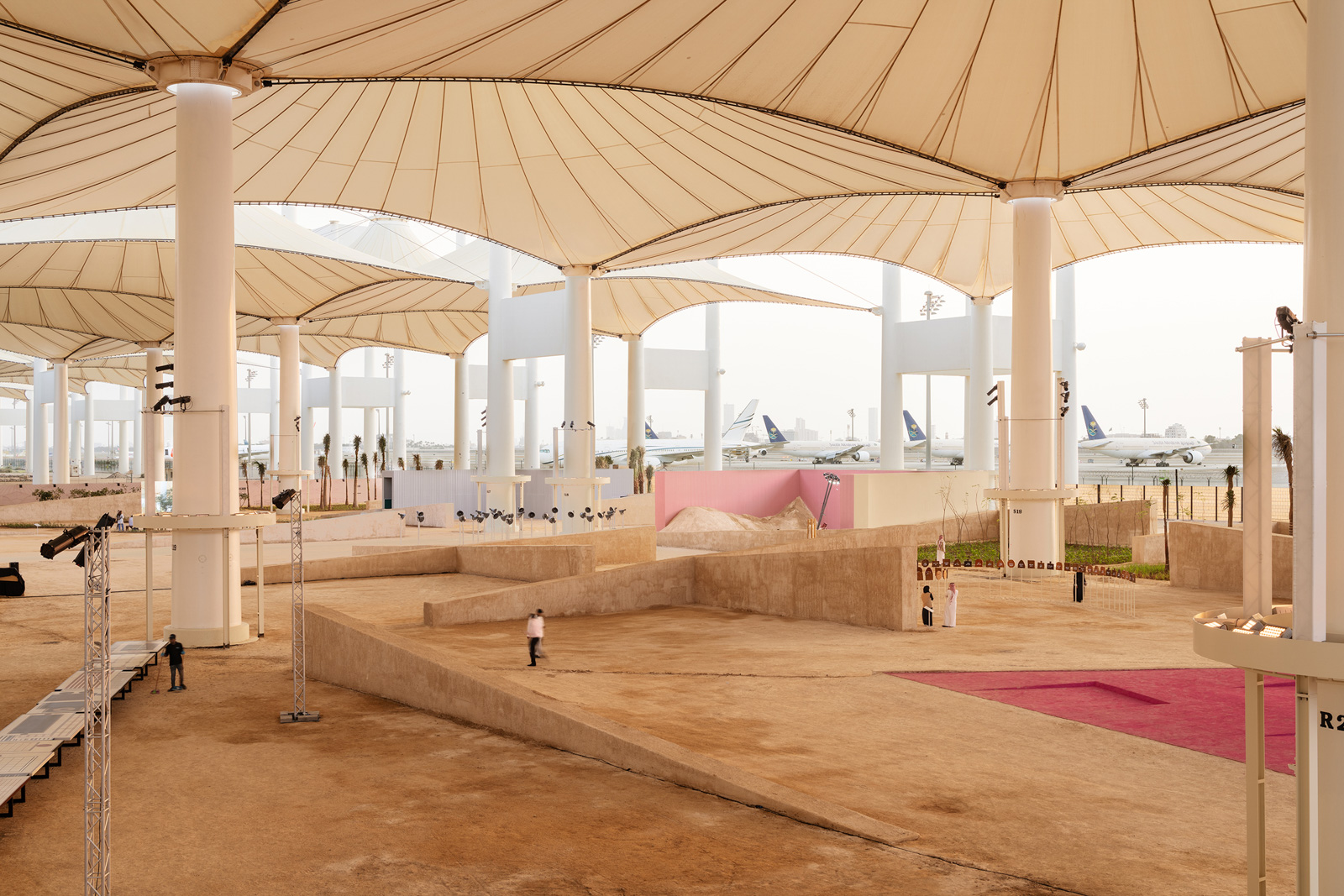
Sumayya Vally Q&A: ‘Being able to imagine a world is such a big part of architecture’
Photograph courtesy of Sumayya Vally
The youngest architect to design the Serpentine Pavilion on how faith and politics have shaped her approach to design
–
In 2021, Sumayya Vally became the youngest architect, at the age of 30, to be commissioned to design the Serpentine Pavilion in Hyde Park, London, described by the Guardian as “a sophisticated chimera of light and depth”.
The founder of the award-winning architecture and research practice Counterspace, which also creates choreography, film and sculptural installations, currently splits her time between London and Johannesburg, South Africa. Counterspace focuses on projects inspired by “hybrid identities”, with Islamic and southern African influences; previous commissions include the Notting Hill Carnival Pavilion and Brixton Mosque.
Vally served as the artistic director of the first Islamic Arts Biennale in Jeddah, Saudi Arabia, in 2023, and is now an honorary professor at University College London’s Bartlett School of Architecture. She spoke to Hyphen about the influence of politics and Islam in her work.
This interview has been edited for length and clarity.
How did you become interested in design and architecture?
I always had a love for telling stories and listening to stories. And there was this walk that I took when I was very young, from my grandfather’s store in inner-city Johannesburg to the City Library. I remember that this was an incredibly sensory experience, seeing informal traders set up their shops and close them down again at the end of the day, seeing people commuting and waiting for taxis. I remember the smells of food and seeing it prepared on the side of the road. I think being able to imagine a world is such a big part of architecture.
You grew up as South Africa’s apartheid system ended. How did that affect you?
There are two political moments in my life that I think, in retrospect, were very formative. I was born right after Mandela’s release and in a time when apartheid was really at its very end. We became a democracy when I was four years old, and Mandela became president. These experiences of walking in the city that I described to you were from the age of four onwards, and there was definitely that feeling of what Archbishop Desmond Tutu coined the “Rainbow Nation”. It was a time of optimism and opportunity when absolutely anything felt possible.
What was the second important political moment you experienced?
I experienced the “Fees Must Fall” movement to stop South African university fees rising. I had just graduated, and I had started teaching so I was still very engaged with the university system. The Rhodes Must Fall and the Fees Must Fall movements started in South Africa and spread around the world. There was this incredible frustration and ambition on the part of young people in South Africa, who really grew up in this time of change, when we felt that systemically there needed to be a huge shift.
How does your practice as an architect draw on these experiences?
As a medium, architecture is so abstract, but it’s a condensation of political ideology and cultural belief systems. I’m interested in how everything translates into architecture, whether that’s sound or language or forms of rituals or forms of music, or I think there’s a language in those things that is waiting to become something architectural.
You’re currently working on a bridge in Belgium. How did you go about creating your vision for it?
The brief was to create a pedestrian bridge that connects two sides of this town, Vilvoorde. The area has a really rich history of Congolese migration and is also one of the most diverse Flemish towns.
When I started to read about the stories and histories of the people who came there, I found a story about this person whose name is Paul Panda Farnana, this incredible figure. He was the first person to study in Belgium who was from the Congo. He studied horticulture, worked for the Belgian government, served in the army and then became an advocate for black people. I was really surprised to find that there’s nothing in the landscape that commemorates Farnana.

Can you tell us about a project inspired by faith?
I developed this idea of Awwal Bait, which means first house, for the first Islamic Arts Biennale in Jeddah. It was firstly about how we construct a spiritual home, internally and inside. Every time we stand up to face the Qibla, we’re connected with people past, present and future who do the same. Secondly, it is about how we construct a home after movement or after migration, no matter where we are in the world. It celebrates that Jeddah is a place that so many people have moved through over time because of the Hajj.
And what are you working on in the UK?
I have another project in Manchester for a public plaza upgrade. It’s become a whole project in honour of the Pan-African conference that happened in Manchester in 1945, the legacies that we should be bringing forth from that and how we continue it. So we’re working on setting up a collaboration with Pan-African institutes in South Africa, and also setting up a radio station.
How are you exploring what Islamic can mean now?
When someone says Islamic art we all immediately think about domes, about arabesques, about calligraphy and mosaics. Those are all incredible art forms but they evolved out of culture and were tied to a time, they were tied to scientific movement. They came from people being generative in creating thought movements and we should be doing that now with the philosophies that we have.
Topics
Get the Hyphen weekly
Subscribe to Hyphen’s weekly round-up for insightful reportage, commentary and the latest arts and lifestyle coverage, from across the UK and Europe
This form may not be visible due to adblockers, or JavaScript not being enabled.